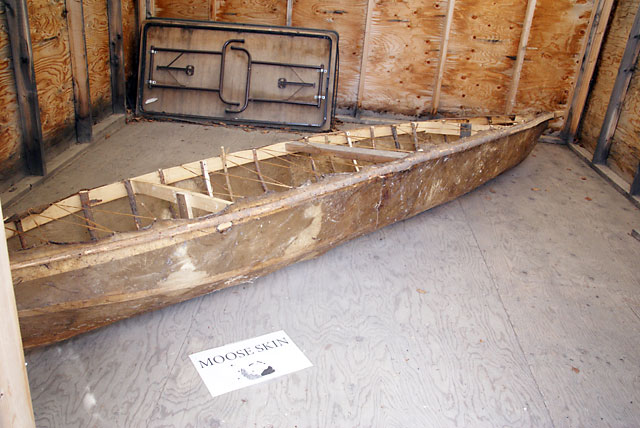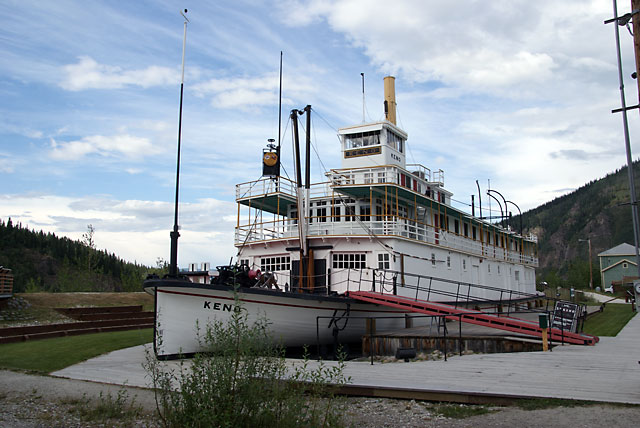North on the Klondike Highway
June 29-30, 2015
After leaving Whitehorse, we
headed north on the Klondike Highway to Dawson, a distance of a little
over 300 miles. For the most part, the Klondike Highway follows the
general route of the Overland Trail, which was built as a winter road
from Whitehorse to Dawson in 1902. It took 5 - 7 days to make the
trip using horse-drawn stagecoaches.

Roadhouses were built along the Overland Trail every 20 - 30 miles to
provide overnight lodging for travelers and fresh horses for the
coaches. The route was abandoned in the 1940s when
air transportation won the contract for carrying the mail,
and reduced the trip time to less than one day.

The Klondike Highway goes past a couple of First Nations museums (also
called interpretive centers). This one near Carmack had this
interesting freighter toboggan that had been used in the area.
The Klondike Highway also follows the Yukon for part of its journey
from Whitehorse to Dawson. Paddlewheel steamers would travel up the
Yukon River as far as Whitehorse. To get there, they had to get through
these Five Finger rapids created by huge rocks in the river channel.
The only navigable channel was the one on the far left in this photo.
To go upstream, they originally used a cable secured to the shore to
winch their way up. Despite the cable, several steamers crashed into
the rocks anyway. Later the government deepened and widened the channel
so the steamers could make it upstream without the cable.

The Yukon river downstream near Minto.

The First Nations Museum at Selkirk had this moose skin canoe. I don't
think I would like to use this on a Boundary Waters canoe trip, despite
it being authentic.

The Keno stern paddlewheel steamer is on display in Dawson. It was
built for the purpose of transporting ore on the Stewart River to where
it merged with the Yukon. At that point, the ore was transferred to the
larger Yukon steamers.

The city of Dawson was created by the Klondike gold rush in 1898. In a
short time it boomed to about 30,000 people. Now it is a city of about
10,000, and seems to be dependent on tourists. To maintain its
historical image, the streets are still dirt, and the sidewalks are
wooden. Parks Canada maintains several historical sites in Dawson.

The Klondike Highway ends at the Yukon River in Dawson. To get
across the river you take this free ferry which runs 24
hours per day in the summer. On the other side is the Top of the
World Highway which goes from here to Alaska. We will take that
tomorrow, weather permitting.








